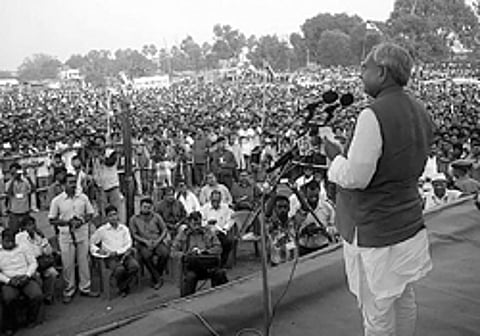Naya Bihar: Nitish’s next yatra
Embarking on his Vishwaas Yatra, trust tour, from idyllic Valmikinagar on the Nepal border early last summer, Nitish Kumar took to the jungles of the Valmiki Tiger Reserve. The terrain was also feared to be Maoist turf. The Bihar chief minister was undertaking a journey of confidence. Carefully moulded tiger 'pugmarks' had been placed along his jungle path by forest officials who also placed a camera trap on the trunk of a teak tree. After taking a look at the 'pugmarks', Nitish walked past the camera – a perfect photo opportunity. Indeed the symbolism of this scene resounded for this writer through the silence of the forest, despite the make-believe pugmarks: Nitish represents a nearly extinct breed in the jungle of Indian politics. Today, finding an honest, sincere neta, with the added gusto of political will, is as elusive as the sighting of the shy, increasingly rare tiger.
Tracking his fourth consecutive yatra from the Champaran region, my mind wandered back to Nitish's first such journey. In 2005 he undertook the Nyaya Yatra, justice tour, starting from the then-dreaded environs of Bagaha in West Champaran district, the nerve centre of the kidnapping-for-ransom industry. His plan then was to seek a mandate from the people to rid Bihar of the 'jungle raj' – the epithet given to the long years of the regime of Lalu Prasad and his wife, Rabri Devi. The Nyaya Yatra took him to all corners of the state over back-breaking potholes for what passed off as roads under a regime whose helicopter-hopping leader, Lalu, had famously not felt he needed. 'The rich drive in motor cars,' Lalu had said, 'not the garib-gurba [poor].' His political rhetoric had made him a messiah of the downtrodden, even as the helicopter rotors whined in the background. But for how long he could maintain the façade of messiah remained to be seen.

